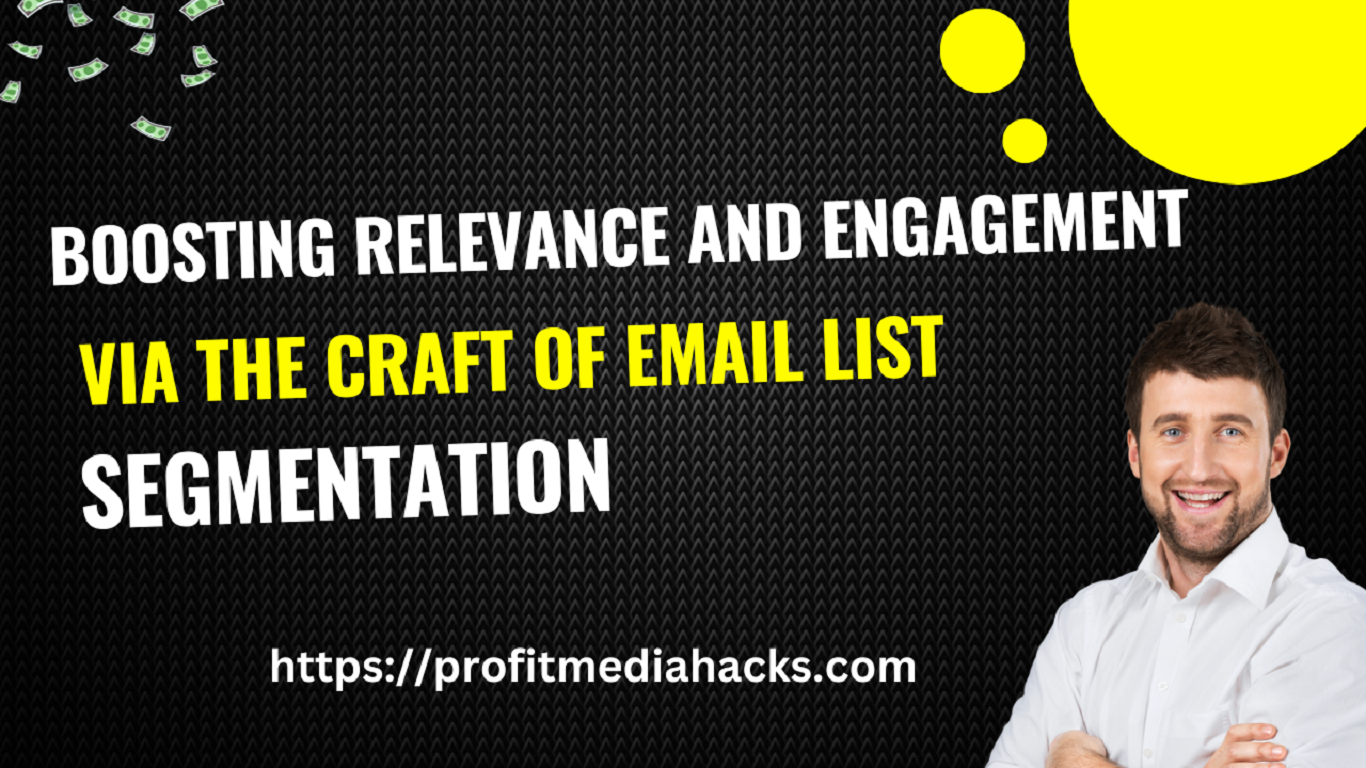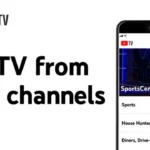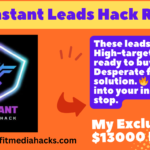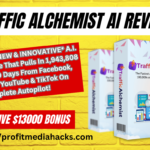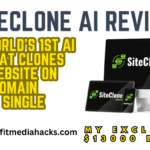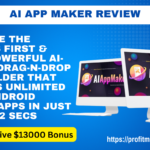In today’s digital landscape, email marketing remains a potent tool for businesses to engage with their audience, drive conversions, and foster customer loyalty. However, sending one-size-fits-all email campaigns to your entire subscriber list is a strategy that’s outdated and ineffective. To truly maximise the impact of your email marketing efforts, you need to embrace the art and science of email list segmentation.
Email list segmentation involves dividing your email subscribers into smaller, more targeted groups based on specific criteria. This segmentation can be as broad or as granular as needed, depending on your goals and the depth of information you have about your subscribers. By customizing your email content to resonate with each segmented group, you can boost relevance and engagement significantly. Here’s how.
Easiest & Proven Way to Make $100 Daily with 0 COST – Watch THIS FREE Training to START >>
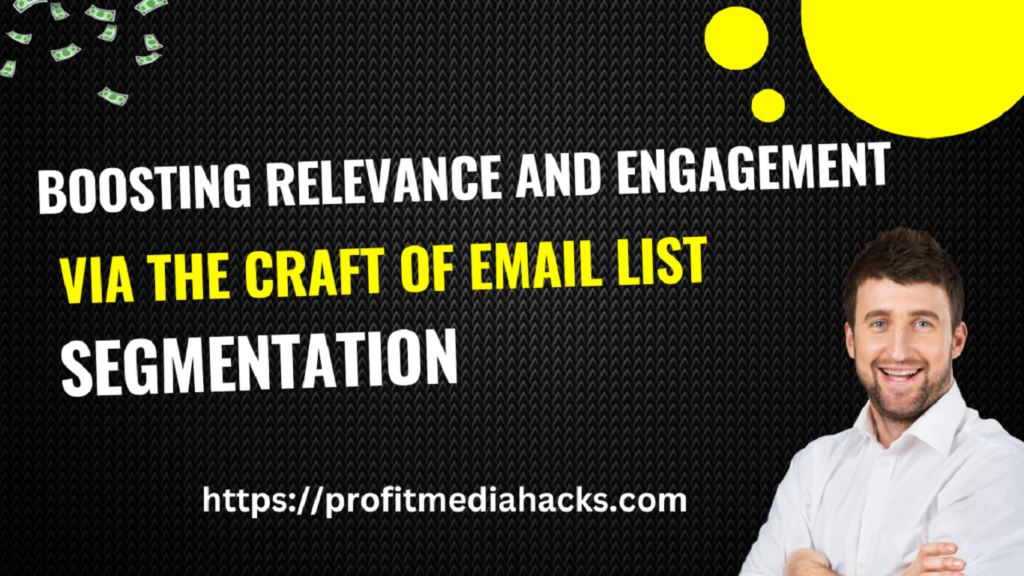
1. Personalization at Scale
One of the primary advantages of email list segmentation is the ability to personalize your email content. Instead of sending generic emails that may only vaguely appeal to your entire list, you can create tailored messages that speak directly to the interests, preferences, and behaviors of each segment. Personalization can lead to higher open rates, click-through rates, and ultimately, better conversion rates.
2. Improved Targeting
Segmentation enables you to target specific subsets of your audience with messages that are highly relevant to their needs and interests. Whether you’re promoting different products, services, or content, segmenting your list ensures that your emails are hitting the mark. This not only enhances engagement but also reduces the likelihood of subscribers unsubscribing or marking your emails as spam.
3. Enhanced Email Content
When you segment your email list, you have the opportunity to craft content that resonates with each segment’s unique characteristics. This means you can use language, imagery, and offers that are more likely to appeal to the preferences and pain points of each group. Such targeted content encourages subscribers to not only open your emails but also take the desired action.
4. Behavioral Triggers
Email list segmentation allows you to implement behavioral triggers that automatically send emails based on subscriber actions or inactions. For example, you can set up automated emails to welcome new subscribers, re-engage inactive users, or follow up with customers who have made a recent purchase. Behavioral triggers are a powerful way to keep your audience engaged throughout their customer journey.
5. Better Analytics and Insights
Segmenting your email list also enables you to gather more detailed analytics and insights. You can track the performance of each segment separately, allowing you to identify which groups are responding most positively to your campaigns. This data-driven approach helps you refine your email marketing strategy over time, ensuring continuous improvement.
6. Avoiding Overload and Fatigue
Segmentation not only boosts engagement but also helps prevent email overload and subscriber fatigue. When recipients receive relevant content tailored to their interests, they are less likely to feel overwhelmed by your messages and more inclined to remain on your list.
Personalization at Scale
In the ever-evolving landscape of email marketing, one key principle stands tall – personalisation. The days of generic, one-size-fits-all email campaigns are long gone. In today’s competitive market, it’s crucial to tailor your email content to resonate with each recipient on a personal level. But how can you achieve this level of personalisation, especially when you have a large subscriber list? The answer lies in “Personalisation at Scale.”
1. Dynamic Content Blocks
Personalisation at scale can be realised through the use of dynamic content blocks. These allow you to create one email template with multiple variations, and the system automatically selects the most relevant content for each recipient based on their data, preferences, and behaviour. This way, you can send a single email campaign that appears uniquely crafted for each individual, reducing manual work while boosting relevance.
2. Smart Segmentation Algorithms
Leverage advanced segmentation algorithms that consider a myriad of factors like purchase history, browsing behaviour, location, and engagement patterns to categorise your subscribers. These algorithms ensure that each segment receives content that aligns with their specific interests, making your emails far more engaging and persuasive.
3. Behavioral Triggers and Automation
Harness the power of automation and behavioral triggers to send personalized emails based on recipient actions. For instance, if a subscriber abandons their shopping cart, an automated email can be triggered with personalized product recommendations, encouraging them to complete the purchase.
4. Real-Time Data Integration
Integrate your email marketing platform with your CRM and other data sources to access real-time customer information. This enables you to send emails with up-to-the-minute personalization, such as sending a birthday greeting with a special offer on the exact day of the recipient’s birthday.
5. A/B Testing and Optimization
Continuously refine your personalization strategies through A/B testing. Experiment with different personalization elements, such as subject lines, product recommendations, and sender names, to identify what resonates most with your audience. Regular optimization based on these insights ensures that your personalization efforts remain effective and up-to-date.
Personalization at scale not only enhances the relevance of your emails but also streamlines your email marketing efforts. By automating and optimizing personalization techniques, you can engage your audience on a personal level, regardless of the size of your email list, and drive improved email marketing results.
Improved Targeting
In the fast-paced world of email marketing, standing out in the inbox and driving engagement requires more than just clever subject lines. The key to success lies in “Improved Targeting,” a strategic approach that ensures your email campaigns reach the right audience with laser-like precision. While sending mass emails may reach a wide audience, it often results in diminished relevance and lower engagement rates. By fine-tuning your targeting strategies, you can significantly boost the effectiveness of your email marketing efforts.
1. Demographic Segmentation
Demographic information such as age, gender, location, and income level can be instrumental in crafting highly relevant email campaigns. By segmenting your list based on these factors, you can tailor your content to resonate with the unique needs and preferences of each group.
2. Behavioral Segmentation
Understanding how your subscribers interact with your emails and website is invaluable. Behavioural segmentation involves categorising subscribers based on their past actions, like purchase history, browsing behaviour, and email engagement. By analysing these behaviours, you can send targeted emails that reflect their interests and behaviours, driving higher engagement and conversions.
3. Purchase History
Segmenting your list by purchase history allows you to send personalized recommendations and upsell or cross-sell products to customers who have made previous purchases. Recognising and rewarding loyal customers with exclusive offers or content can also foster brand loyalty.
Easiest & Proven Way to Make $100 Daily with 0 COST – Watch THIS FREE Training to START >>
4. Engagement Levels
Not all subscribers engage with your emails at the same level. Segmenting by engagement level (e.g., frequent openers, occasional openers, and non-openers) lets you send re-engagement campaigns to dormant subscribers or offer exclusive content to your most engaged audience.
5. Custom Segmentation
Sometimes, a combination of factors can provide the most precise targeting. Custom segmentation involves creating segments based on specific criteria unique to your business, such as subscription source, product preferences, or event attendance. This allows for highly tailored messaging that resonates with a specific subset of your audience.
Improved targeting in email marketing is like hitting the bullseye with every email sent. By focusing your efforts on delivering the right message to the right people, you can maximize the impact of your campaigns and foster stronger customer relationships. Targeting is not just about sending emails; it’s about sending the right emails to the right audience at the right time.
Enhanced Email Content
In the competitive world of email marketing, the battle for attention and engagement rages on. To emerge victorious, marketers must not only deliver emails to their subscribers’ inboxes but also captivate them with compelling content. This is where “Enhanced Email Content” comes into play—a strategic approach that elevates your email marketing efforts from ordinary to extraordinary. By infusing your emails with captivating visuals, persuasive copy, and interactive elements, you can keep your audience eagerly anticipating each message.
1. Visual Storytelling
Enhanced email content embraces the power of visual storytelling. Use eye-catching images, videos, and infographics to convey your message effectively. Visuals not only grab attention but also make your content more memorable and shareable.
2. Persuasive Copywriting
Craft persuasive and personalized copy that resonates with your audience. Highlight the benefits of your products or services, address pain points, and use language that speaks directly to the recipient’s needs and desires. A well-written email is more likely to engage and convert.
3. Interactive Elements
Interactive elements, such as clickable buttons, polls, quizzes, and surveys, can transform passive recipients into active participants. These elements not only engage your audience but also provide valuable insights into their preferences and behaviors.
4. Mobile Optimization
Given the prevalence of mobile email usage, it’s essential to ensure your emails are mobile-responsive. Enhanced email content is designed with mobile users in mind, featuring responsive layouts and concise, scannable content that delivers a seamless experience across all devices.
5. Personalization
Enhanced email content goes beyond the recipient’s name in the subject line. Personalization includes dynamically generated product recommendations, location-specific offers, and content tailored to the recipient’s past behavior and preferences. Personalized emails are more likely to resonate and drive conversions.
Enhanced email content isn’t just about making your emails look pretty; it’s about creating messages that captivate, inform, and inspire action. By focusing on visual storytelling, persuasive copywriting, interactive elements, mobile optimization, and personalization, you can craft emails that stand out in the crowded inbox and keep your audience engaged and eager for more.
Behavioral Triggers
In the realm of email marketing, timing is everything. Sending the right message to the right person at the right moment can make all the difference in engaging your audience and driving conversions. Enter “Behavioral Triggers,” a sophisticated strategy that automates your email campaigns based on your subscribers’ actions and inactions. By leveraging these triggers, you can foster deeper connections with your audience, guide them through their customer journey, and increase the effectiveness of your email marketing efforts.
1. Welcome Emails
A well-timed welcome email is the perfect way to start a relationship with a new subscriber or customer. Use behavioural triggers to automatically send a personalized welcome email as soon as someone joins your list or makes their first purchase. This sets the tone for a positive customer experience.
2. Abandoned Cart Recovery
When a customer abandons their shopping cart without completing a purchase, it’s a prime opportunity to re-engage. Behavioral triggers can send automated reminder emails with enticing product recommendations or discounts to encourage them to return and make a purchase.
3. Re-Engagement Campaigns
Subscribers who haven’t interacted with your emails for a while may need a gentle nudge. Behavioral triggers can detect inactivity and trigger re-engagement campaigns, offering exclusive content, discounts, or incentives to win back their interest.
4. Post-Purchase Follow-Ups
After a customer makes a purchase, their journey with your brand is far from over. Behavioral triggers can automate post-purchase follow-up emails, requesting reviews, offering complementary products, or providing helpful resources to enhance the customer experience.
Easiest & Proven Way to Make $100 Daily with 0 COST – Watch THIS FREE Training to START >>
5. Birthday and Anniversary Emails
Show your customers you care by sending automated birthday and anniversary emails. These triggers create a personal touch, making your subscribers feel valued and appreciated.
Behavioral triggers not only save time and effort but also enhance the relevance of your email campaigns. By deploying timely welcome emails, abandoned cart recovery messages, re-engagement campaigns, post-purchase follow-ups, and personalized birthday and anniversary emails, you can create a seamless customer experience and boost engagement throughout the customer lifecycle.
Better Analytics and Insights
In the world of email marketing, knowledge is power. To craft highly effective campaigns, you need more than just great content and an engaging subject line; you need actionable insights. This is where “Better Analytics and Insights” come into play—a data-driven approach that allows you to gain a deeper understanding of how your email campaigns perform. By harnessing the power of analytics and insights, you can make informed decisions, optimize your strategies, and continuously improve your email marketing efforts.
1. Open Rates and Click-Through Rates
Analyze your email open rates and click-through rates to gauge the initial engagement of your campaigns. These metrics reveal which subject lines and content resonate most with your audience, helping you refine your messaging for better results.
2. Conversion Tracking
Track conversions to understand how effective your emails are at driving the desired actions, such as purchases, sign-ups, or downloads. This insight is critical for evaluating the ROI of your email marketing efforts.
3. A/B Testing
Utilize A/B testing to experiment with different elements of your emails, such as subject lines, content, and visuals. By comparing performance metrics between variations, you can identify what works best and continuously optimize your campaigns.
4. Subscriber Segmentation Performance
Evaluate the performance of your segmented email campaigns. Compare open rates, click-through rates, and conversion rates among different segments to identify which groups respond most positively to your messages.
5. Subscriber Engagement Trends
Monitor subscriber engagement trends over time. Are your engagement rates improving or declining? Understanding these trends allows you to adapt your strategies to keep your audience engaged.
Better analytics and insights empower you to make data-driven decisions that can significantly impact the success of your email marketing campaigns. By continuously monitoring open rates, click-through rates, conversion tracking, A/B testing, subscriber segmentation performance, and subscriber engagement trends, you can fine-tune your approach and ensure that your emails remain relevant and effective in a constantly evolving digital landscape.
Avoiding Overload and Fatigue
In the ever-connected world we live in, inboxes are inundated with a constant stream of emails, each vying for the recipient’s attention. Amidst this digital deluge, the challenge for email marketers is not just to get noticed but to do so without overwhelming or fatiguing their subscribers. Enter the imperative of “Avoiding Overload and Fatigue”—a strategic approach that ensures your email marketing efforts are welcomed rather than resented. By carefully managing email frequency, optimizing content, and respecting subscriber preferences, you can maintain the impact of your campaigns while safeguarding the valuable relationship between your brand and your audience.
1. Thoughtful Segmentation
Effective email list segmentation, as discussed earlier, plays a pivotal role in avoiding overload and fatigue. Sending relevant content to the right segments ensures subscribers receive emails that genuinely interest them, reducing the likelihood of unsubscribes or disengagement.
2. Frequency Capping
Implement frequency capping to limit the number of emails a subscriber receives within a specific timeframe. This prevents overloading recipients with too many messages, which can lead to fatigue and unsubscribes.
3. Preference Center
Empower subscribers with a preference center where they can choose the frequency and types of emails they receive. Giving them control over their inbox experience can increase their satisfaction and reduce email fatigue.
4. Behavior-Based Automation
Leverage behavioral triggers to send emails based on recipient actions. This ensures that subscribers receive emails when they are most engaged and interested, reducing the risk of overload and fatigue.
5. Regular Engagement Analysis
Monitor subscriber engagement patterns and adjust your email marketing strategy accordingly. If certain segments or types of content consistently show signs of fatigue, adapt your approach to maintain engagement.
Avoiding overload and fatigue in email marketing is not just about sending fewer emails; it’s about sending the right emails, at the right times, to the right people. By practicing thoughtful segmentation, implementing frequency capping, offering a preference center, leveraging behavior-based automation, and regularly analyzing engagement data, you can strike the delicate balance between staying visible and respecting your subscribers’ limits, ensuring that your email marketing remains a valuable and welcomed communication channel.
Conclusion
Email list segmentation is not just a marketing technique; it’s an art and science that can significantly enhance the effectiveness of your email campaigns. By personalising content, improving targeting, enhancing email content, implementing behavioural triggers, analysing performance, and avoiding overload, you can foster deeper connections with your subscribers and drive better results.
In a world where consumers are inundated with digital communication, relevance is paramount. Segmentation empowers you to provide the right message to the right people at the right time, ultimately leading to increased engagement, higher conversion rates, and improved customer satisfaction. Embrace the craft of email list segmentation and watch your email marketing efforts soar to new heights.
Easiest & Proven Way to Make $100 Daily with 0 COST – Watch THIS FREE Training to START >>
Thank you so much for taking the time to read my article, ”Boosting Relevance and Engagement Via the Craft of Email List Segmentation.” Stay Safe!!!!
